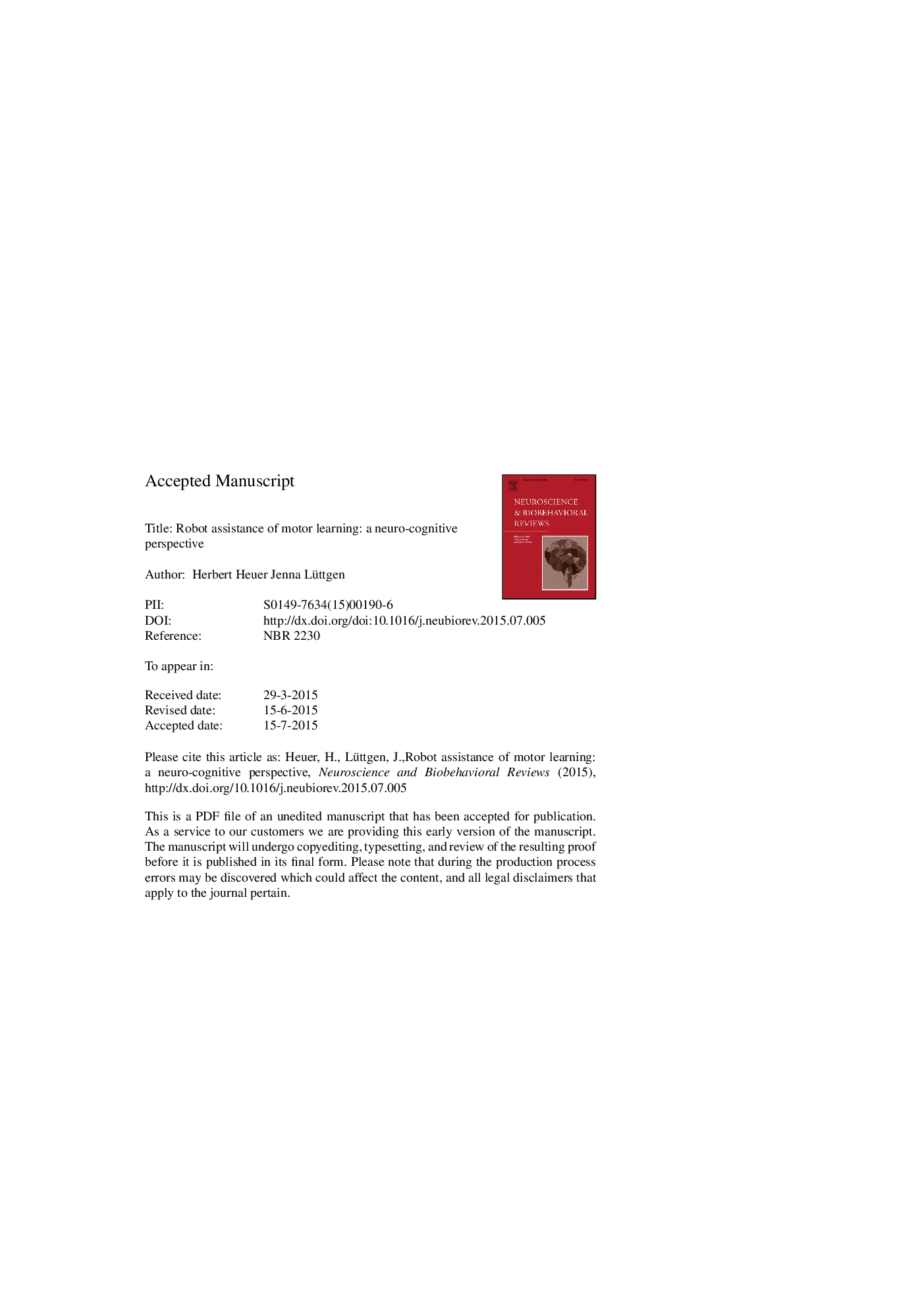| Article ID | Journal | Published Year | Pages | File Type |
|---|---|---|---|---|
| 7303355 | Neuroscience & Biobehavioral Reviews | 2015 | 81 Pages |
Abstract
The last several years have seen a number of approaches to robot assistance of motor learning. Experimental studies have produced a range of findings from beneficial effects through null-effects to detrimental effects of robot assistance. In this review we seek an answer to the question under which conditions which outcomes should be expected. For this purpose we derive tentative predictions based on a classification of learning tasks in terms of the products of learning, the mechanisms involved, and the modulation of these mechanisms by robot assistance. Consistent with these predictions, the learning of dynamic features of trajectories is facilitated and the learning of kinematic and dynamic transformations is impeded by robotic guidance, whereas the learning of dynamic transformations can profit from robot assistance with error-amplifying forces. Deviating from the predictions, learning of spatial features of trajectories is impeded by haptic guidance, but can be facilitated by divergent force fields. The deviations point to the existence of additional effects of robot assistance beyond the modulation of learning mechanisms, e.g., the induction of a passive role of the motor system during practice with haptic guidance.
Related Topics
Life Sciences
Neuroscience
Behavioral Neuroscience
Authors
Herbert Heuer, Jenna Lüttgen,
